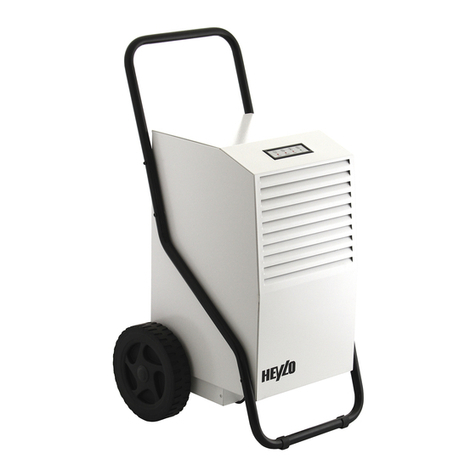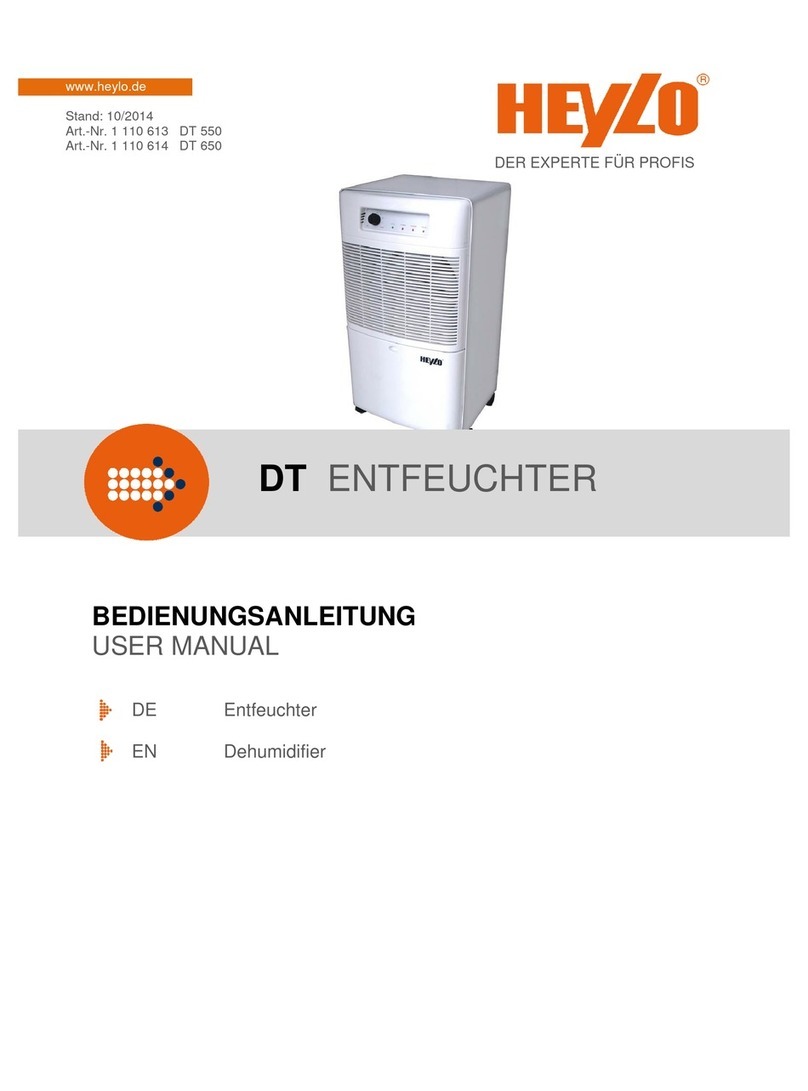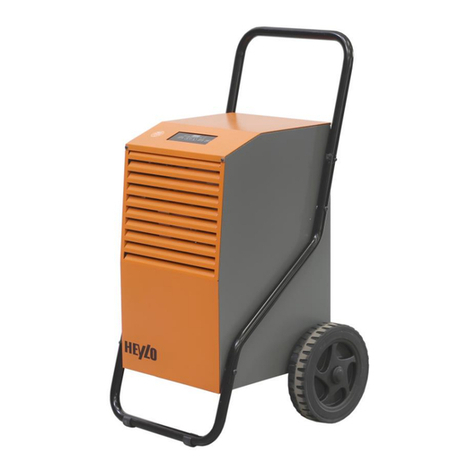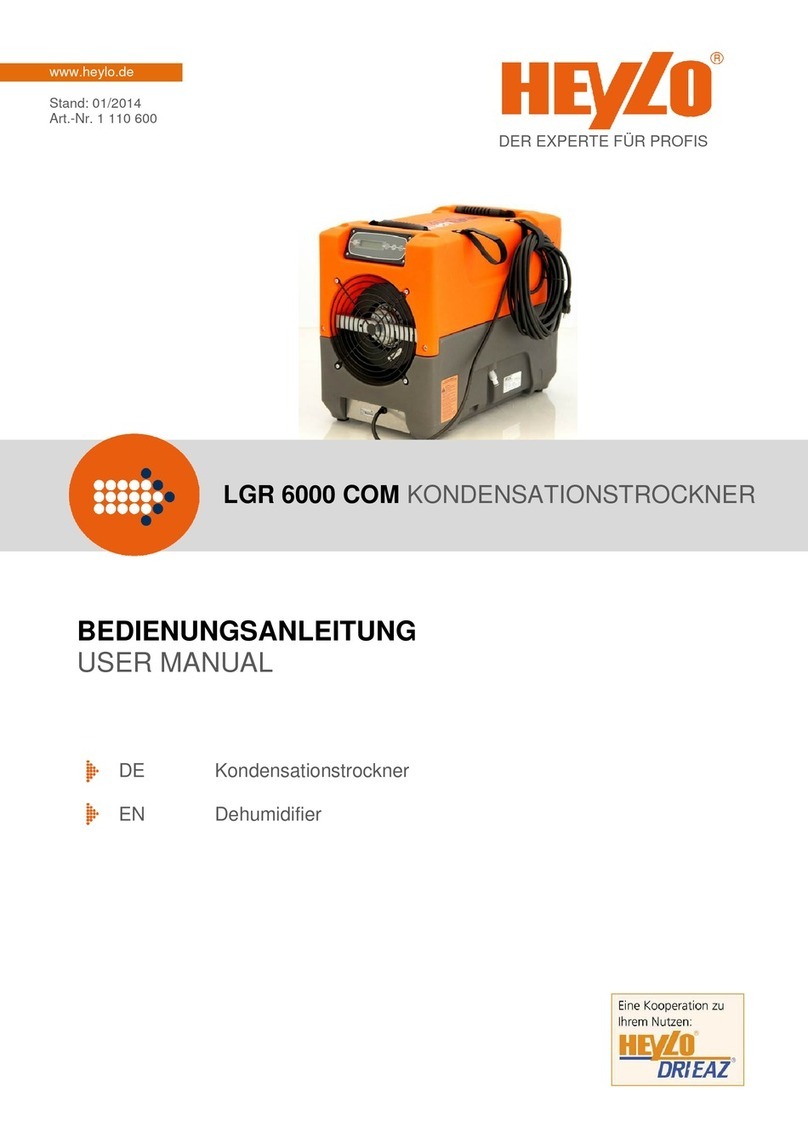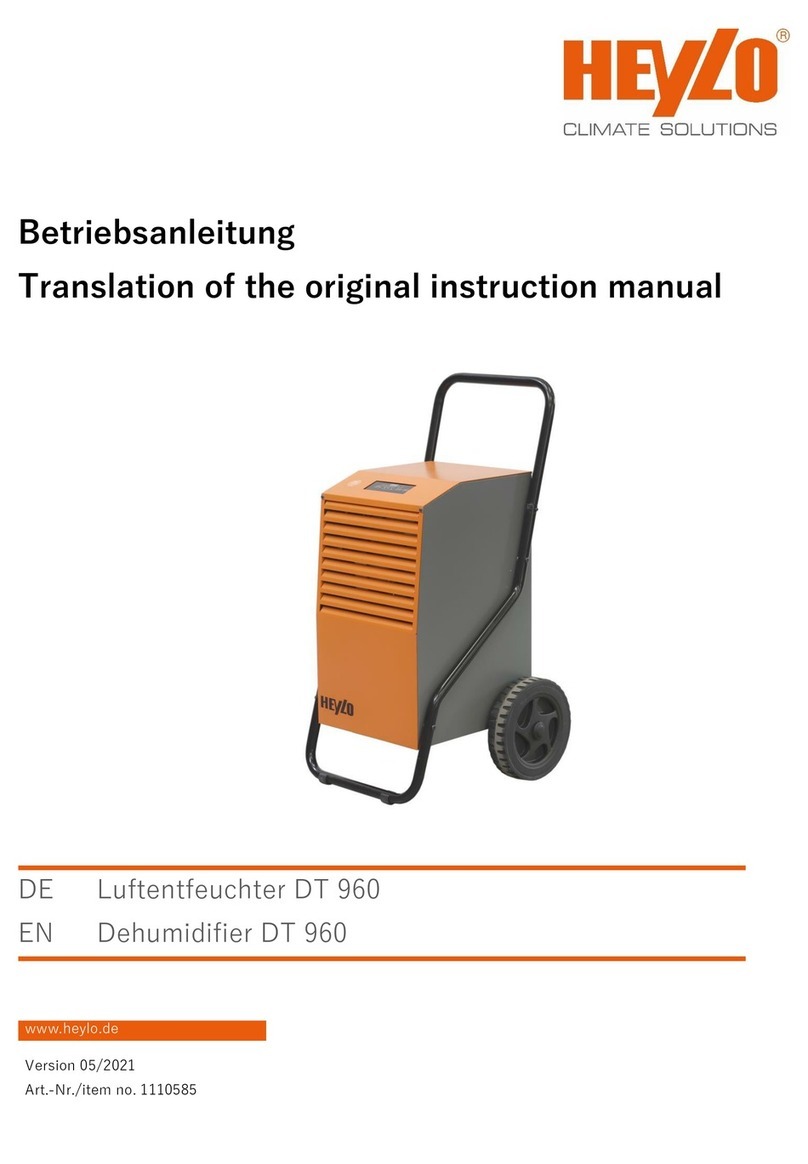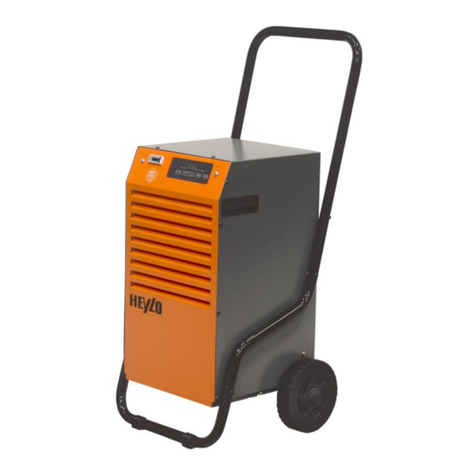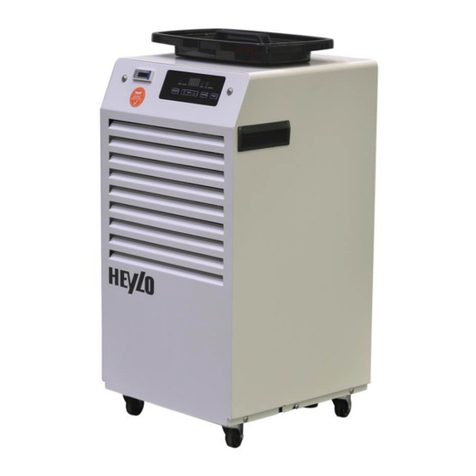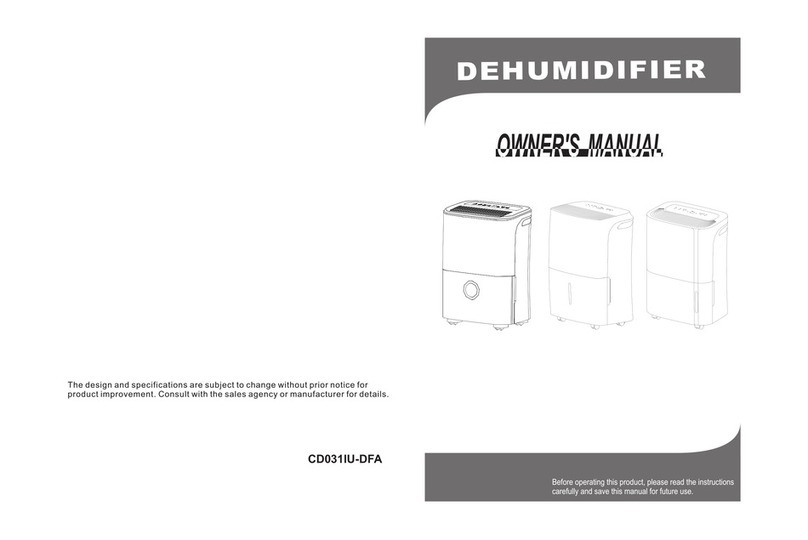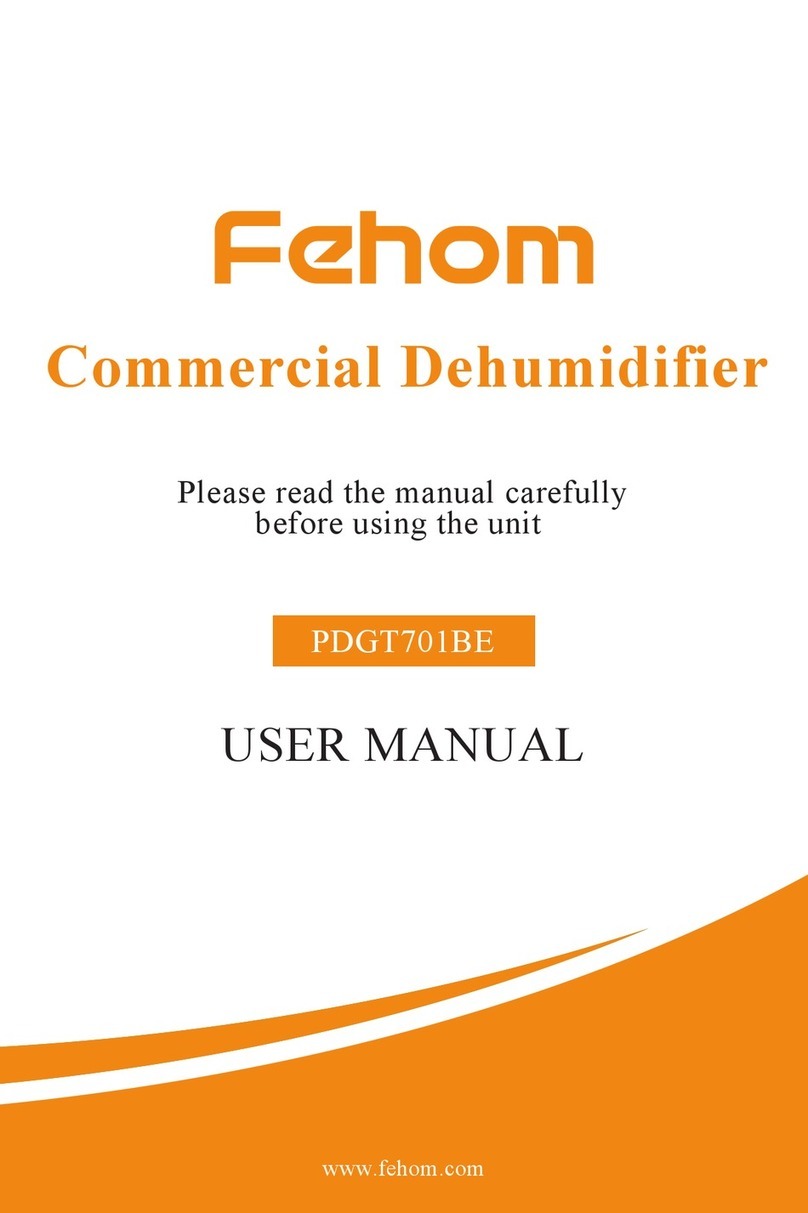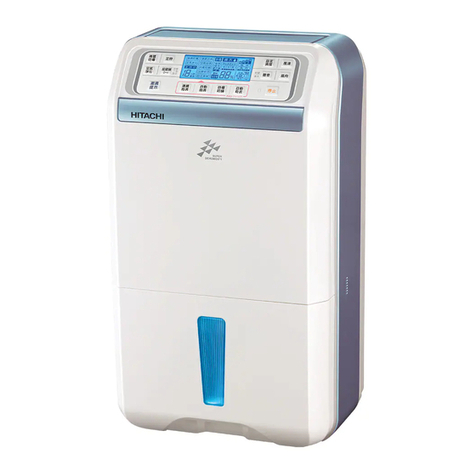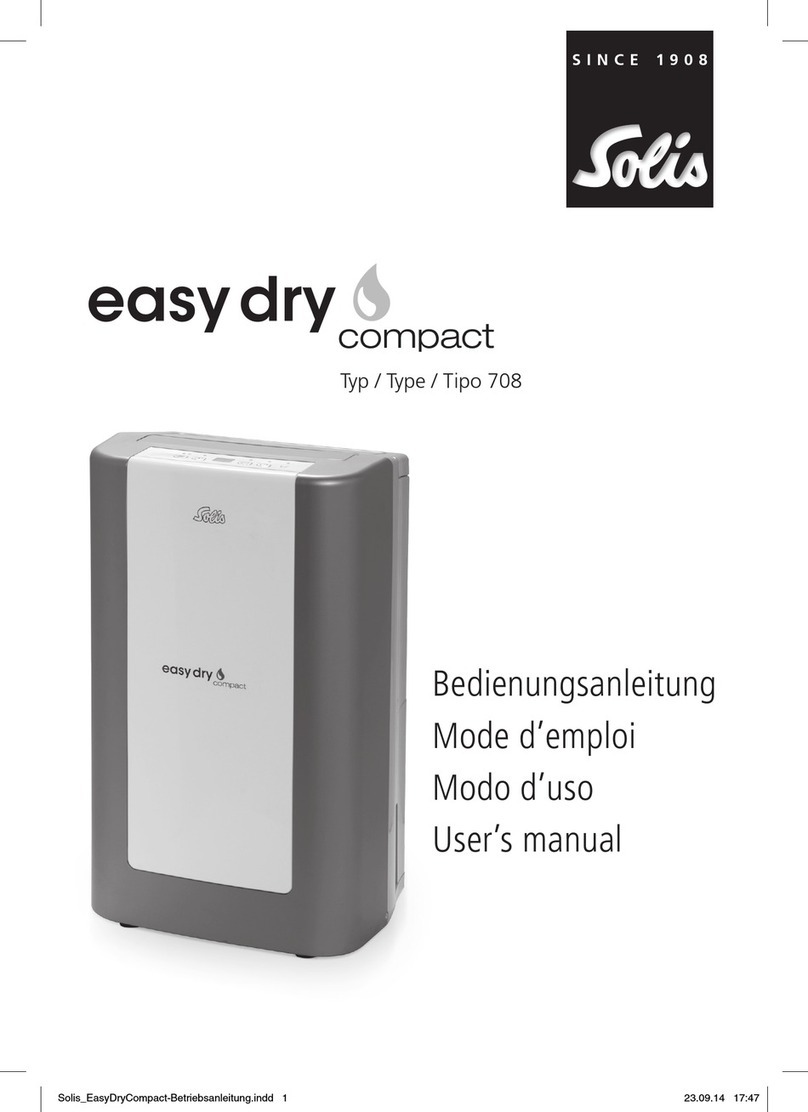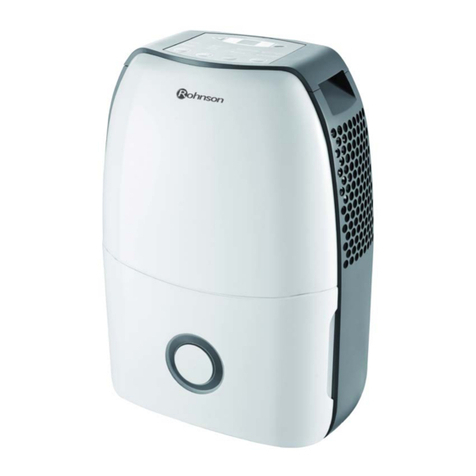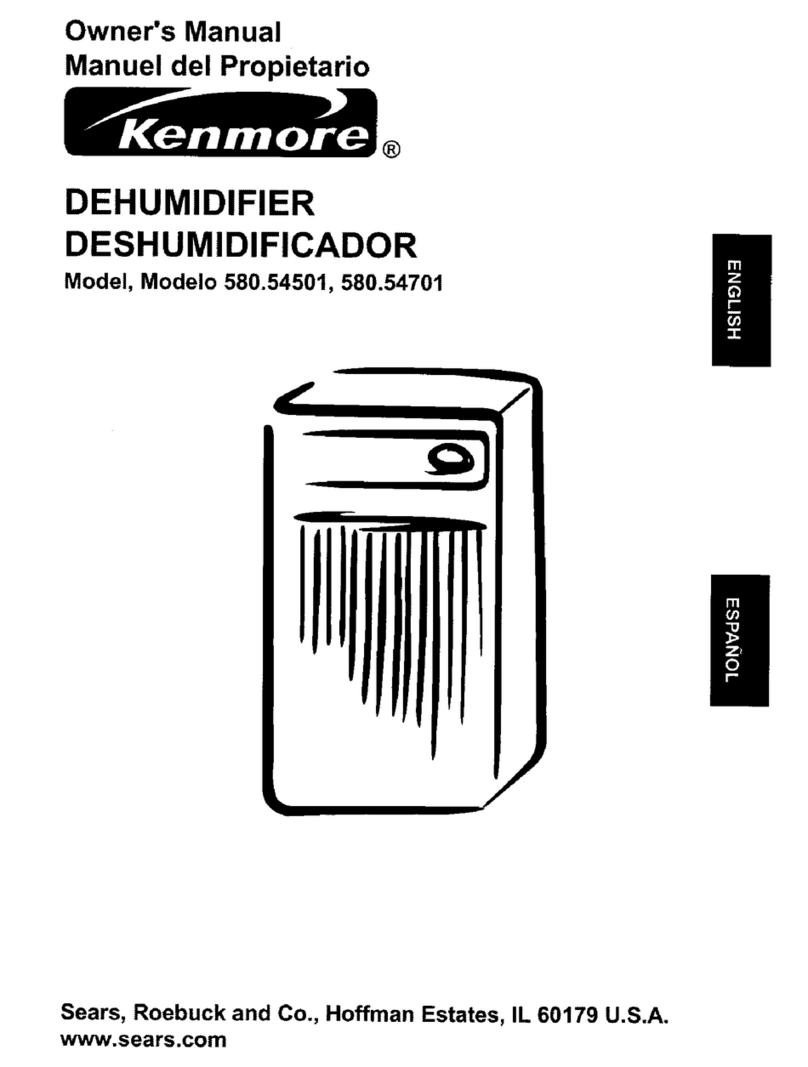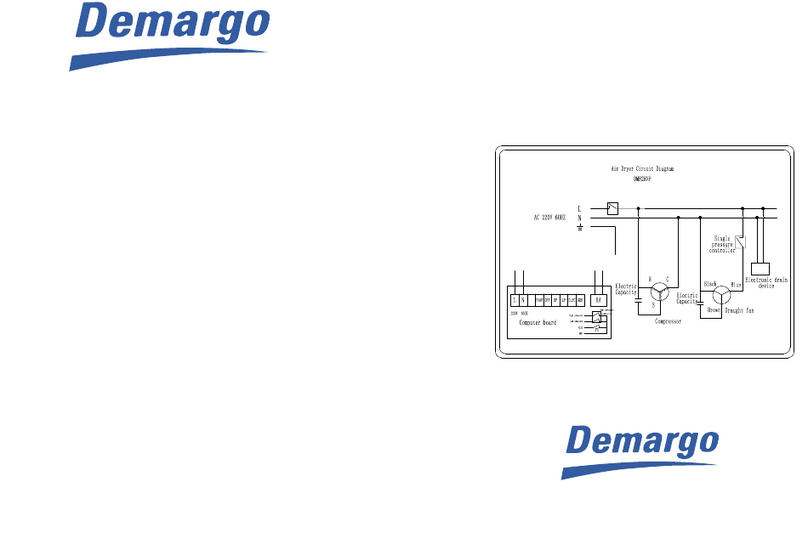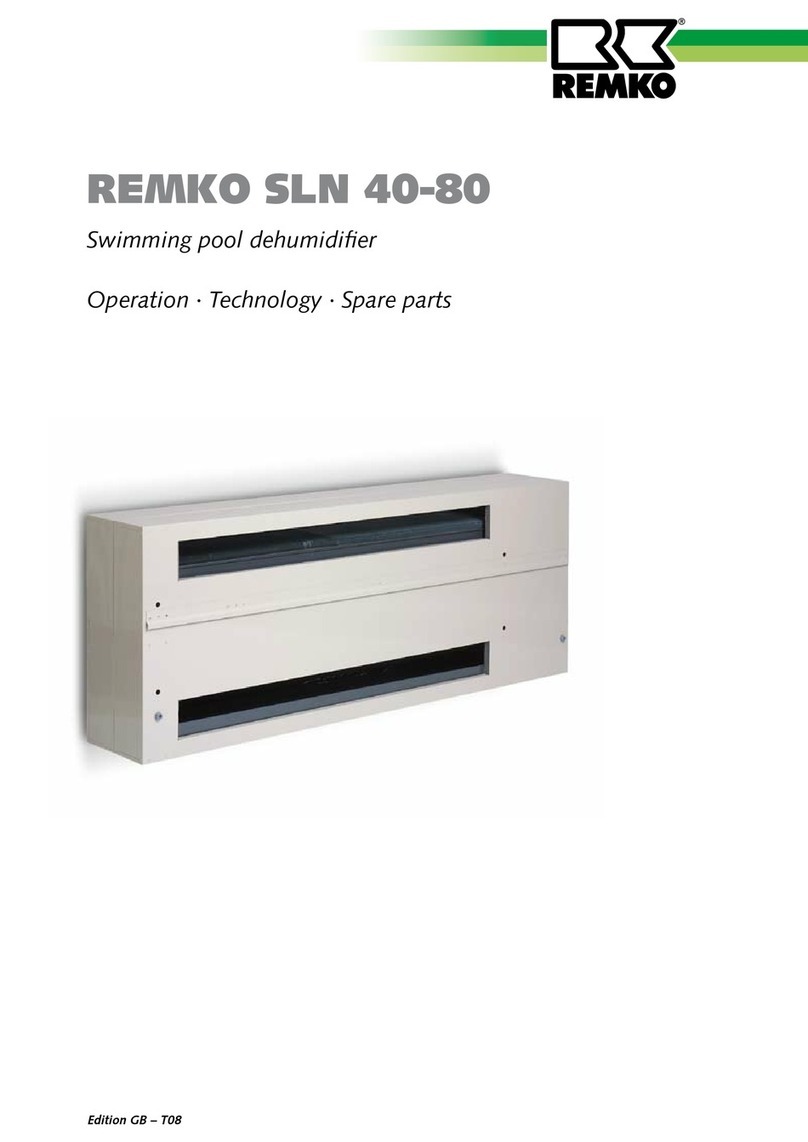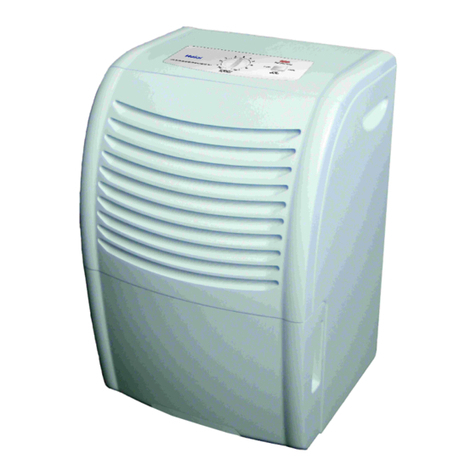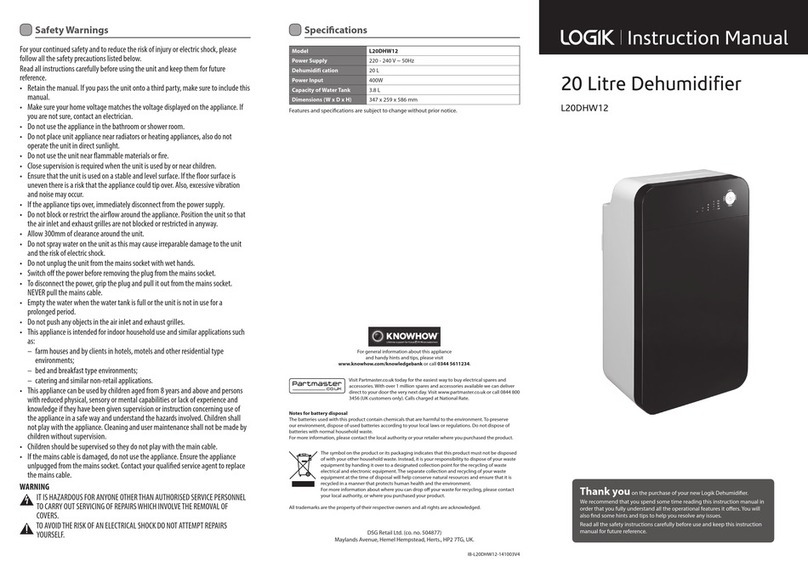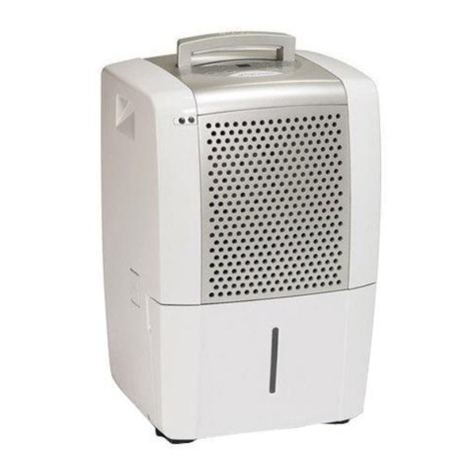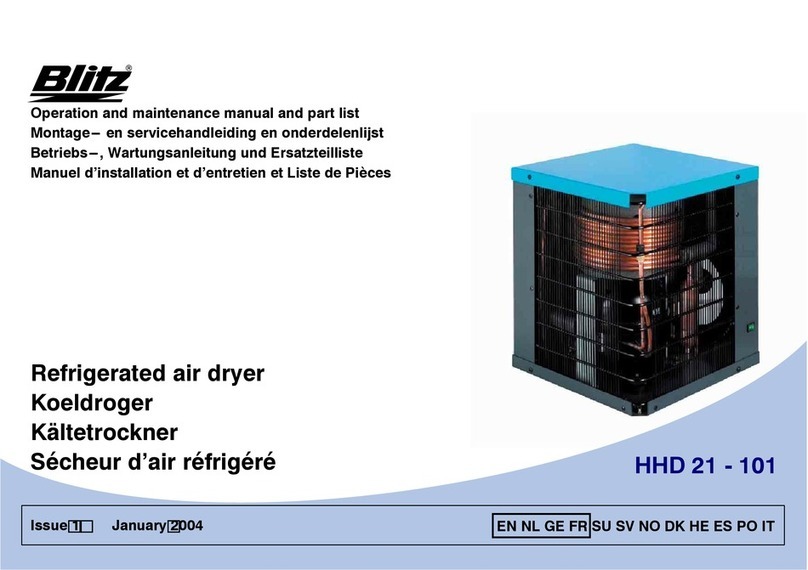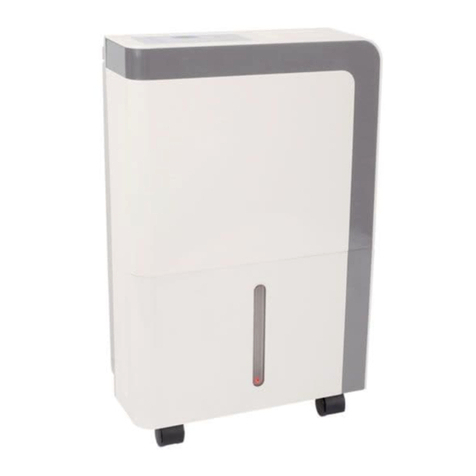
3
1. Sicherheitshinweise
ACHTUNG: Vor Inbetriebnahme unbedingt lesen!
Bitte beachten Sie sorgfältig die Hinweise in der Bedienungsanleitung. Bei Nichtbeachtung erlischt der
Gewährleistungsanspruch. Für Schäden bzw. Folgeschäden die daraus entstehen, übernimmt der
Hersteller keine Haftung.
Kinder fernhalten: Kinder nicht mit dem oder in der Nähe des Geräts spielen lassen.
Elektrischer Anschluss: HEYLO Bautrockner sind für den Betrieb mit 230V/50Hz ausgelegt. Nur mit
Schukostecker verwenden! Genutzte Steckdosen müssen geerdet sein, bzw. mit einem
Fehlerstromschutzschalter in der Hausinstallation abgesichert sein.
Stromkabel vor Beschädigung schützen: Das Gerät niemals mit beschädigtem Stromkabel
benutzen. Wenn das Stromkabel beschädigt ist, muss es durch ein Kabel derselben Art und
Bemessung ersetzt werden.
Verlängerungskabel: Nur zugelassene Verlängerungskabel benutzen!
Mit Sorgfalt behandeln: Das Gerät nicht fallen lassen oder werfen, da es sonst zu Beschädigungen
von Bauteilen oder der Verdrahtung kommen kann.
Auf einer festen Fläche arbeiten: Das Gerät immer auf einer festen, ebenen Fläche aufstellen.
Während des Transports sichern: Bei Transport in Fahrzeugen Gerät gegen Rutschen sichern.
Trocken halten: Das Gerät darf nicht in Pfützen oder stehendem Wasser betrieben werden. Nicht im
Freien aufbewahren oder betreiben. Wenn die elektrische Verdrahtung oder Teile des Geräts nass
werden, ist das Gerät vor der Wiederbenutzung gründlich zu trocken.
Luftöffnungen frei halten: Die Luftein- und auslässe nicht abdecken oder blockieren.
Filter sauber halten: Immer einen sauberen Luftfilter verwenden. Den Filter nicht verstopfen lassen,
da sich der Bautrockner sonst überhitzen kann. Darauf achten, dass kein Öl, Fett oder andere
Verschmutzungen in den Bautrockner gesaugt werden.
Reparaturen des Gerätes: Bitte lassen Sie Reparaturarbeiten nur von Servicepartnern der Firma
HEYLO durchführen. Informationen über das HEYLO Servicecenter oder zugelassene
Servicetechniker erhalten Sie telefonisch, per Fax oder E-Mail:
2. Arbeitsweise und Entfeuchtungsleistung
Der DT 950 ist ein Kondensationstrockner. Die Entfeuchtungsfunktion entsteht, indem die feuchte
Raumluft über die kalte Verdampfereinheit geblasen wird. Die Feuchtigkeit kondensiert auf der kalten
Oberfläche und tropft ab. Das entstandene Kondensat wird in den Kondensattank geleitet oder über
die Kondensatförderpumpe bzw. den Ablassschlauch abgeführt. Die jetzt wärmere und trocknere Luft
kehrt in den Raum zurück und nimmt dort wieder Wasserdampf auf.
Wenn der Kondensationstrockner bei einer Zimmertemperatur unter ca. 20°C arbeitet, bildet sich
normalerweise Reif auf der Verdunsterschlange. Stellt die Elektronik Eistemperatur auf dem
Verdampfer fest, löst sie automatisch den Abtauzyklus aus. Während dieser Zeit läuft eine
beträchtliche Wassermenge vom Verdampfer in den Kondensattank. Sobald das Eis am Verdampfer
abgetaut ist, wird der normale Betrieb wieder aufgenommen. Da die Abtauung per Heißgas erfolgt,
dauert der Abtauzyklus nur ein paar Minuten.
Die Menge des Wassers, welches vom Gerät entfernt wird, hängt bei allen Kondensationstrocknern
von der Luftfeuchtigkeit und Lufttemperatur ab. Die Leistung des Bautrockners ist möglichst daran zu
messen, wie schnell die Luftfeuchtigkeit sinkt und nicht daran, wie viel Wasser ihr entzogen wird. Die
genaue Luftfeuchtigkeit können sie mit einem Thermo-Hygrometer messen.
